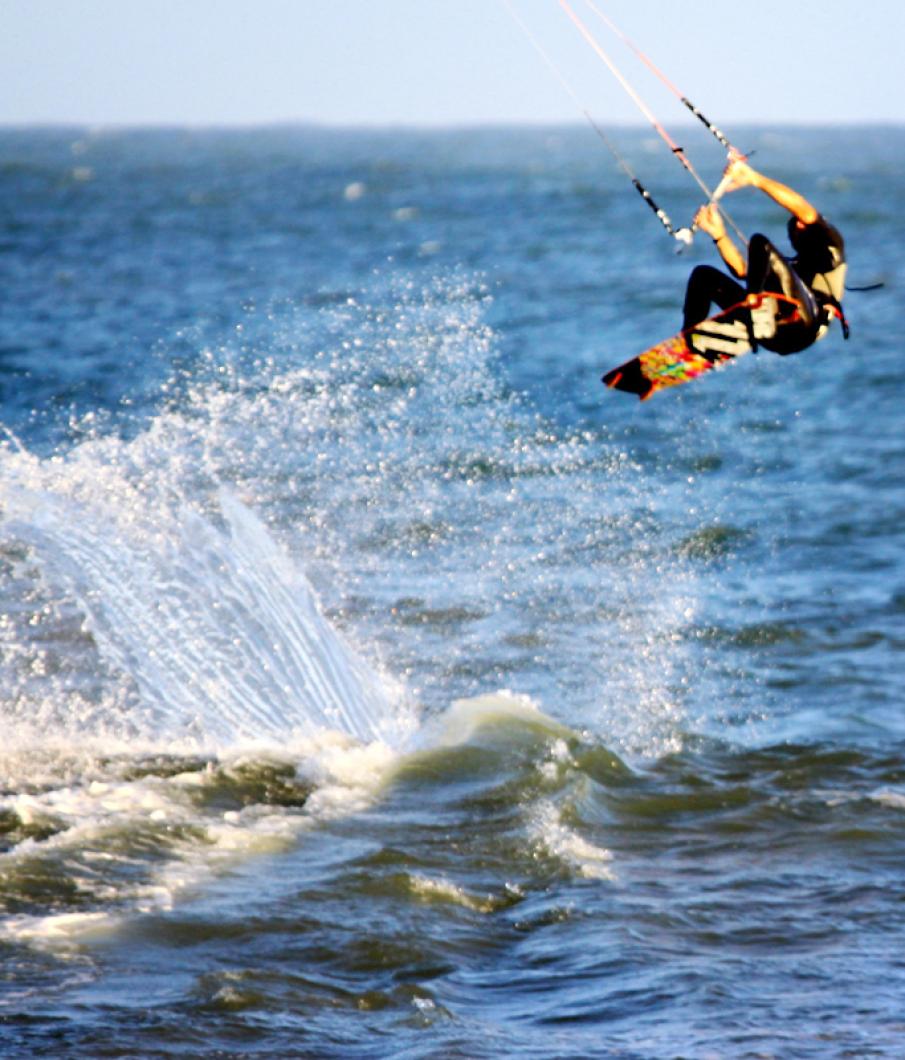I would like a word with wind.
Or maybe a few words with wind. Windfall, windburn and windmill would all fit the bill.
Wordsmithing aside, the winds that were whipping last weekend during Hurricane Earl were simply not that worrisome. Hurricane Earl was a bust, but with wind you never know if it will be wild, winsome or wimpy.
There are those that always want wind — sailors love it and windsurfers are dead in the water without it — though others might see some downsides to wind. When the wind comes up, it rattles my windows, wakes me up (and keeps me up) at night and causes concern about getting on and off the Island. On the flip side, it does do wonders for giving hair that nice windblown look.
Wind can be good or bad — depending on your point of view, or in the case of the proposed Cape Wind, your viewpoint.
The fuss is about the power and the potential of air. Simply stated, wind is the movement of air, generally from high pressure to low pressure. Heat and moisture move with wind, which creates most of the world’s weather. Without wind, there would be no weather.
On a global scale winds are very predictable. Cold air moves from the poles toward the equator, where it warms up and rises. From there it will begin to move back toward the poles, creating a cell-like pattern of air movement. Tradewinds and westerlies create more localized air pockets as distance from the equator increases, with wind movements easterly and westerly, respectively.
Locally, we are so used to feeling the force of winds, weak or strong, that a totally calm day can feel strange. We expect to feel at least some air movement when we step outdoors. Air currents can be subtle enough to cause the rustling of leaves outside your window; stronger ones blow the chimes on the porch. But they can also be a force of destruction. For centuries people have tried to manage and measure the wind.
One early attempt to quantify the wind was developed in 1806 by Francis Beaufort. His efforts earned him a knighthood and a promotion to admiral, and his scale is still in use today. He created 13 divisions of wind based on speed, starting at 0 mph and going to 74 mph and higher. In the case of no wind, smoke rises vertically and water is glassy. A rating of 12 brings winds to hurricane force with waves 40 feet or more, and almost no visibility on the water.
But it can get worse from there. Winds of higher speeds have their own scales. The Fujita scale describes high winds associated with tornadoes and the Saffir Simpson scale takes on hurricane force winds. These are the winds to worry about.
The Saffir Simpson scale is a one to five rating based on intensity. On this scale, winds of 74 mph are at the bottom of the scale, category 1, and cause storm surge to 5 feet and “minimal damage.” At the higher end of the spectrum, category 5 winds can be “catastrophic,” with winds of 155 plus miles per hour and storm surges of 18 feet or more. We surely dodged a bullet when Hurricane Earl failed to climb up this scale of destructiveness.
We can’t blame the forecasters for their dire predictions; they are simply offering us the best of their knowledge. Nor can we make peace among the pro-and anti-wind turbine factions. There is no simple resolution in sight, but it just might be that the answer is blowing in the wind.
Suzan Bellincampi is director of the Felix Neck Wildlife Sanctuary in Edgartown.




Comments (1)
Comments
Comment policy »